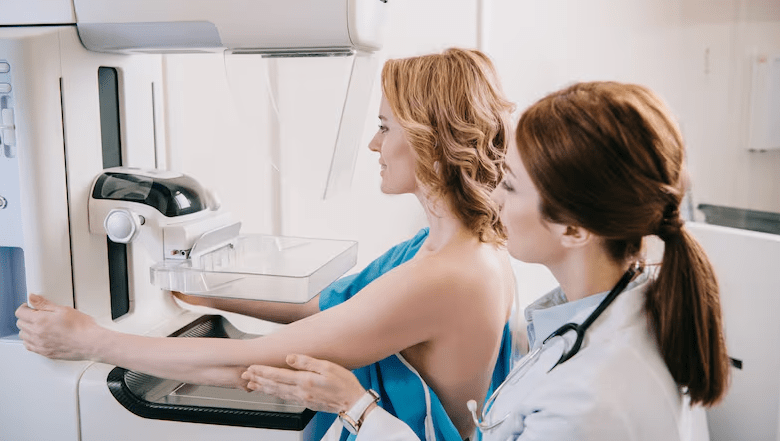
Detecting Breast Cancer Early: Exploring The Benefits Of Mammography
One of the most common types of cancer in women around the world is breast cancer. Even though there have been big improvements in treatments, early diagnosis is still the most important thing that can be done to raise survival rates and lower deaths. Mammography, a screening method that uses low-dose X-rays to look at breast tissue, is very important for finding breast cancer early. This article delves into the benefits of mammography in detecting breast cancer early and its impact on women’s health outcomes.
Introduction To Mammography
Mammography is a non-invasive imaging technique recommended for women starting at the age of 40, although screening guidelines may vary depending on individual risk factors and medical history. The breast is pressed between two plates during a mammogram, which makes it possible to get clear pictures. Radiologists then look at these pictures and look for any problems or signs of breast cancer, like lumps, tiny calcium deposits, or changes in the structure of the breast. For more information on mammography screening guidelines and access to screening services, visit https://lma-llc.com to learn how you can prioritize your breast health and schedule a mammogram today.
Early Detection Saves Lives
Breast cancer can be found early when treatment choices are best. This is one of the main benefits of mammography. Studies have shown over and over that getting a mammogram regularly lowers the risk of dying from breast cancer by finding tumors early before they can spread to other parts of the body. Finding cancer in its early stages gives women a better chance of getting better treatment and living longer.
Improved Treatment Options
Finding it early not only raises the chances of surviving, but it also gives women more possible treatments. Breast cancer that is found early may not need major surgeries or chemotherapy if it can be treated with less severe methods like a lumpectomy or localized radiation therapy. This not only minimizes the physical and emotional impact on patients but also leads to better long-term outcomes and quality of life.
Reducing The Burden Of Disease
In addition to saving lives, early detection through mammography helps reduce the overall burden of breast cancer on individuals, families, and healthcare systems. By identifying tumors when they are smaller and localized, patients may require less intensive treatments, resulting in lower healthcare costs and resources. Furthermore, early detection can prevent the progression of cancer to advanced stages, which often necessitate more aggressive and costly interventions.
Tailored Risk Assessment And Management
Mammography also allows healthcare providers to assess an individual’s risk of developing breast cancer based on imaging findings and personal health history. Women identified as having an increased risk may benefit from additional screening modalities such as breast MRI or genetic testing to further evaluate their risk profile. This personalized approach enables healthcare providers to implement targeted prevention strategies and surveillance plans tailored to each patient’s specific needs.
Empowering Women’s Health
Regular mammography screening empowers women to take control of their health and well-being by proactively monitoring for breast cancer. By participating in routine screenings, women can detect abnormalities early, enabling prompt intervention and treatment if necessary. Not only does this approach improve health outcomes, but it also gives women a feeling of self-empowerment and self-advocacy, which makes them more likely to put their health first and take preventive care steps.
Addressing Disparities In Access And Awareness
While mammography has proven benefits in detecting breast cancer early, disparities in access and awareness persist, particularly among underserved communities and marginalized populations. Efforts to improve access to screening services, educate women about the importance of mammography, and address barriers to care are essential in ensuring that all women have equitable access to early detection and timely treatment. By addressing these disparities, we can work towards reducing disparities in breast cancer outcomes and improving health equity for all women.
Conclusion
Mammography remains a cornerstone in the early detection of breast cancer, offering significant benefits in improving survival rates, treatment options, and overall health outcomes for women. By promoting regular screening and addressing barriers to access, we can further enhance the impact of mammography in detecting breast cancer early and ultimately saving lives. Women must make their breast health a priority and get screened regularly to find cancer when it is the smallest and easiest to treat.




